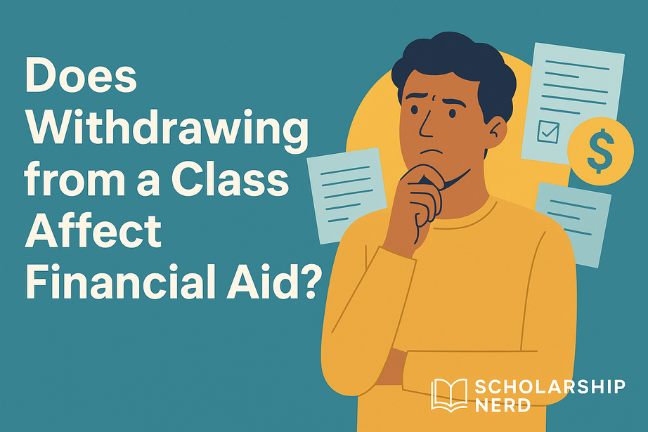If you’ve ever heard someone say, “I already got into college!” before most students even hit submit on their applications, they were likely applying to a school with rolling admission.
Under a rolling admission policy, colleges review applications continuously as soon as they’re complete, rather than waiting for one specific date to evaluate everyone at once. For many schools, that window opens as early as August or September and can stay open well into the spring.
This process gives students more flexibility and faster answers, which can relieve a lot of stress. You could know where you’re accepted before winter break while your friends are still anxiously waiting for decisions. However, it’s important to remember that “rolling” doesn’t mean unlimited time. The earlier you apply, the better your chances for financial aid, scholarships, and even preferred housing.
How Rolling Admission Works
Think of rolling admission like a moving train: applications come in, and colleges review them on an ongoing basis until all the seats, both literal and figurative, are filled.
Most schools with rolling admission start accepting applications in early fall and continue until all spots are taken. The advantage is that students usually hear back within four to eight weeks after submitting their applications. For many, that quick turnaround helps reduce uncertainty and allows more time to plan financially and emotionally for the next step.
Still, “rolling” doesn’t mean “endless.” Colleges often set priority dates or early deadlines that guarantee full consideration for scholarships, housing, or specific programs. Missing those could mean missing opportunities, even if the application window is still open.
Example:
Let’s say you apply to Penn State in September. You could receive a decision by November, giving you time to plan financial aid and housing. But if you wait until March, you may find that institutional scholarships or preferred dorms are already gone.
So while rolling admission is flexible, it rewards the proactive. Think of it as “first come, best served.”
Rolling Admission vs. Regular Decision vs. Early Action
Many students (and parents!) confuse these terms, so let’s make it simple.
Rolling admission offers the most flexibility, while regular decision and early action are tied to fixed dates. Here’s how they compare at a glance:
If you’re still weighing your options, here’s how to think about it:
- Rolling admission is great if you want flexibility or missed early deadlines.
- Early action is best if you’re ready early and want the best shot at merit aid.
- Regular decision works if you need more time to strengthen your application.
Each path works, but the key is to match your timeline to your goals, especially when it comes to scholarships and financial aid.
How Rolling Admission Impacts Financial Aid and Scholarships
Here’s where many students get tripped up. Even though rolling admission allows later applications, financial aid timelines do not roll.
Your FAFSA and CSS Profile deadlines remain fixed, no matter when a college reviews your application. The FAFSA typically opens on October 1 each year, and many colleges have priority aid deadlines in early winter. That means if you wait too long to apply, you might still be accepted but miss out on key funding opportunities.
Colleges also often distribute institutional scholarships on a rolling basis, which means funds can run out as the cycle progresses. The earlier you apply and complete your aid forms, the more likely you are to secure those limited dollars.
Example:
If you submit everything by October or November, you may be first in line for both admission and aid. Wait until February or March, and some need-based grants may already be gone.
The good news? Rolling admission gives you flexibility to apply to multiple schools and compare aid packages. The key is timing — get those forms in early.
Scholarship Nerd Tip: Start your FAFSA and scholarship applications the same week you submit your college apps. This keeps your funding timeline aligned with your admission timeline.
For official aid deadlines, visit studentaid.gov or read our guide on financial aid deadlines.
Pros and Cons of Rolling Admission
Rolling admission can be a wonderful option, but like any process, it has trade-offs.
Rolling Admission Pros
Rolling admission is all about freedom and control.
- You can apply when you’re ready
- Get decisions faster
- Take pressure off your senior-year schedule
It’s especially helpful if your grades improve later or if you want to keep your options open while waiting on other schools.
Rolling Admission Cons
However, there’s a hidden urgency:
- Schools with rolling admission often fill up gradually, both in terms of spaces and scholarships
- If you wait until late winter, you may find fewer options available and fewer funds too
- The biggest risk isn’t rejection; it’s missing out on money
In short, rolling admission offers peace of mind, but only if you treat it like a priority, not an afterthought.
Tips for Applying to Rolling Admission Colleges
If you want to take advantage of rolling admission, a little planning goes a long way.
Start by setting an internal deadline for yourself — ideally before Thanksgiving. That gives you enough time to polish essays, collect recommendations, and complete your FAFSA.
Here’s a good rhythm to follow:
- Apply Early: The earlier you apply, the stronger your chances of securing scholarships and housing.
- Know Each College’s Rules: Even “rolling” schools can have priority scholarship dates.
- Stay Organized: Create a checklist or digital tracker for deadlines and documents.
- Coordinate Financial Aid: Submit FAFSA and CSS Profile early, even if some schools are still accepting applications.
- Stay Engaged: Follow up with admissions offices to confirm they have your materials. Early communication shows interest.
By staying ahead, you position yourself not only for earlier acceptances but for stronger financial aid packages.
Colleges With Rolling Admission (Examples)
Many well-known universities use rolling admission to attract a wide range of students. You’ll find it especially common among large public institutions, though some private colleges use it too.
Here are a few examples (always check official sites for current policies):
- Pennsylvania State University (Penn State)
- University of Alabama
- Michigan State University
- Indiana University Bloomington
- University of Minnesota – Twin Cities
- Arizona State University
- Purdue University
Each of these schools offers flexibility but still rewards early applications with better access to aid and housing.
For an updated list, see PrepScholar’s latest information.
Final Thoughts: Should You Apply Rolling?
If you value flexibility, less stress, and faster answers, rolling admission can be an excellent path. But remember, flexibility doesn’t mean endless time.
Applying early gives you the best of both worlds: less waiting and more access to scholarships and aid. Whether you’re a planner who wants to get ahead or someone who needs a second chance after missing early deadlines, rolling admission can open doors if you walk through them soon enough.
Explore other verified scholarships outside of your preferred college with Scholarship Nerd!
Rolling Admission FAQ
What does rolling admission mean for college?
It means colleges review applications as they’re received, providing flexibility and quicker decisions.
Can you get financial aid with rolling admission?
Yes, but financial aid deadlines still apply. Submit FAFSA and aid forms early.
When should I apply for rolling admission schools?
Apply in the fall for the best shot at scholarships and housing.
Do rolling admission schools run out of spots?
Yes, as the cycle progresses, fewer seats and aid opportunities remain.
How does rolling admission affect scholarships?
Early applicants often have access to more institutional and merit-based funding.
Compliance Notes
- Information provided is for educational purposes only.
- Scholarship and aid deadlines may vary. Always confirm with each college or the U.S. Department of Education.
Verified sources: studentaid.gov, College Board, Princeton Review.




